by Ray Bodrey | May 4, 2018
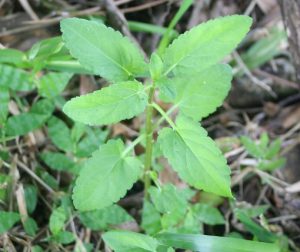
Figure 1: Florida Betony, Stachys floridana. Credit: UF/IFAS Range Cattle Research & Education Center.
If you look closely at your yard, there is a good chance that you will find a plant that, depending on who you ask, is considered either a native wildflower or a weed and there are more than a few species that fit this description. If, upon even closer inspection, you find a plant with root tubers that resemble egg casings or even a rattlesnake’s rattle, you’ve stumbled upon Florida Betony.
Stachys floridana is a perennial broadleaf commonly referred to as rattlesnake weed due to it’s fleshy, white, segmented underground tubers. The plant has an erect stem with leaves that are opposite, shovel-shaped and coarsely serrated. The plant structure is very similar to mint. Flowers, emerging in late spring, are pinkish-purple in color. These inflorescences will also produce fruit, consisting of four nutlets. However, reproduction of the plant and it’s propensity to spread through lawns and gardens primarily occurs through dense root tuber development. Florida Betony’s growing range was originally confined to the state of Florida, but the commercial nursery trade played a major hand in dispersing the plant across the Southeast in the mid-1900’s. It can now be found as far west as Texas and as far north as North Carolina.

Figure 2: Tubers of the Florida Betony. Credit: Jill Bebee, UF/IFAS Gulf County Master Gardener.It can now be found as far west as Texas and as far north as North Carolina.
This time of year is when Florida Betony thrives. The moderate temperatures of fall and spring are the prime growing periods for Betony. In the heat of the summer, the above-ground structure of the plant will struggle and often disappear completely, only to reemerge in the fall. As a lawn weed, managing tuber development is key to controlling this plant. Applying herbicide to the leaves and stalk may seem at first to have conquered the weed. However, in most cases the tuber will simply regenerate. Glyphosate (Roundup) can be used effectively for control in ornamental plant beds where no turf is present. Be careful when spraying herbicides around trees, shrubs and other desirable plants as any foliar contact will cause phytotoxicity. If you have an infestation of Florida Betony in your turfed areas, there are a few options for control. Regular applications of three way broadleaf herbicides, such as mixtures of 2-4D, Dicamba and Mecoprop, are effective at suppressing this pesky plant. For more information and options, please contact your local county extension office or see the supporting information links below. Always refer to the product label for specific uses, precautions and application rates when using any herbicide.
Supporting information for this article can be found in the following the UF/IFAS EDIS publication, “Florida Betony Biology and Management in Turf” by J. Bryan Unruh, Ramon G. Leon, and Darcy E. P. Telenko: http://edis.ifas.ufl.edu/pdffiles/EP/EP38800.pdf
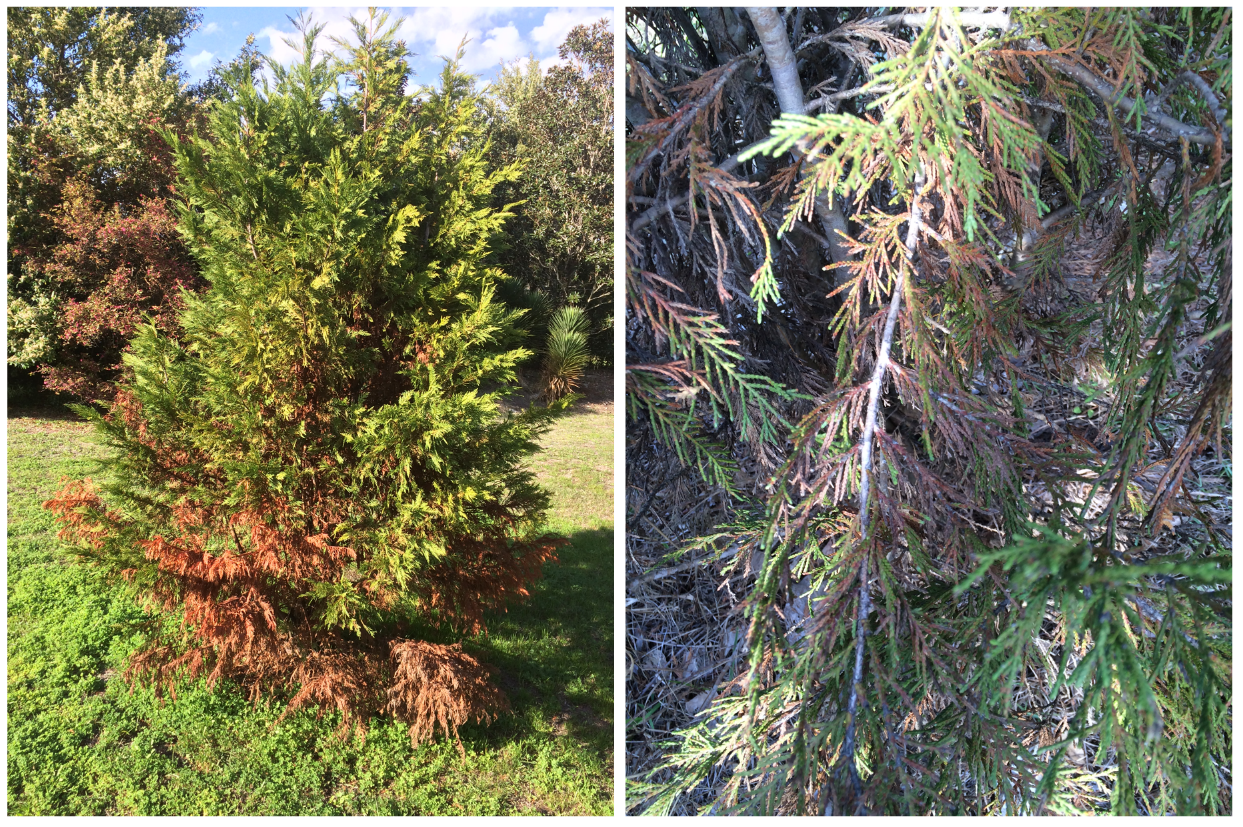
by Ray Bodrey | Apr 9, 2018
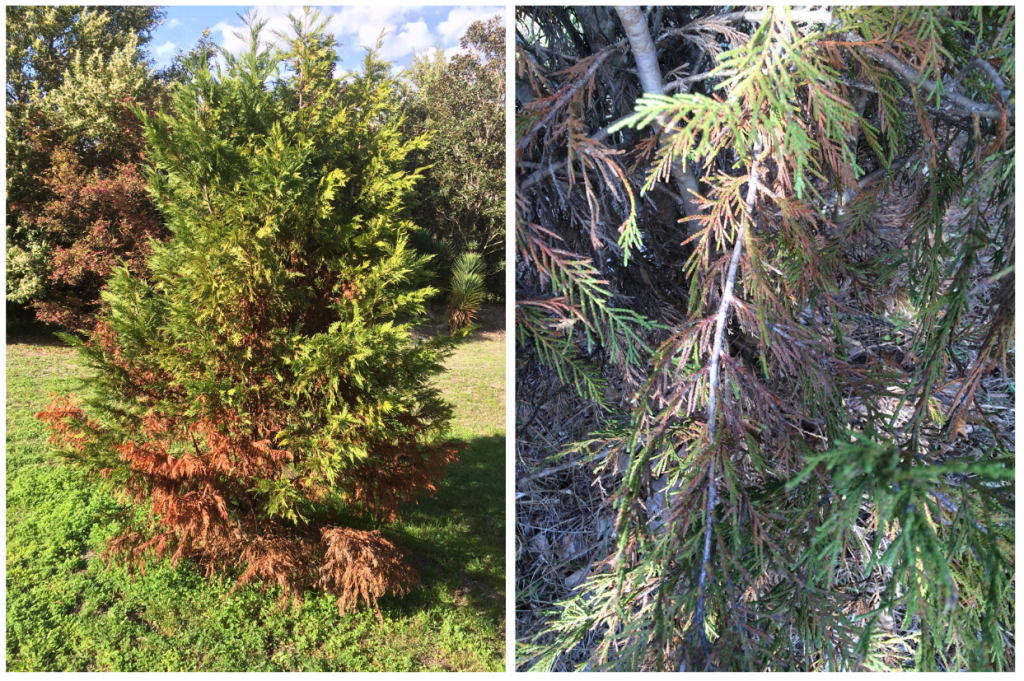
Figure: Passalora Needle Blight in Leyland Cypress. Image Credit Ray Bodrey
Leyland cypress (Cupressocyparis leylandii) has been a very popular landscape tree in the U.S. for many decades. It has endearing characteristics, most notably its fast-growing nature and ability to make an appealing boundary around property. However, various diseases have created an overwhelming survival hurdle.
Seiridium or Botryosphaeria cankers (also referred to as dieback) are fungal diseases that can strike Leyland cypress. In general terms, cankers are multiple dark oval lesions that are usually sunken into the bark. The lesions are accompanied by the flow of resin. Discolored branches will be seen first as an indicator. If the fungus finds its way into the body of the trunk, most likely the tree will not survive. With Seiridium canker, girdling of branches and stems is not an issue, however needles will fall off the branches easily. With Botryoshaeria canker, stem girdling will occur, killing the branch, but needles generally will stay on the branch.
Passalora Needle Blight or commonly known as twig blight, caused by the fungus Passalora sequoia, is a major concern in the Southeast. The disease is usually more active in the spring and summer months and affects mostly younger growth. Symptoms of the disease are the browning of needles, followed by needle drop. Disease usually begins on the lower part of the tree and moves up. Sometimes the disease is widespread on one side of the tree only, where sunlight is not able to dry moisture quickly. Ventilation is key when planting these trees as a border hedge. However, the Panhandle environment and climate is very conducive for these pathogens to affect the vulnerable Leyland cypress.
If you have or will plant Leyland cypress, there are some fungicide options to consider as preventive maintenance. It’s important to stress that trees that are already infested, will succumb to the disease regardless of treatment. Fungicides such as Daconil & Mancozeb (Pentathlon) can be used in the spring & fall. Propiconazole is the best fungicide for the warmer, summer months (June through August). Fungicides such as Myclobutanil or Thiophanate-methyl are also commonly used. Always read application directions and pay close attention to the application rate interval.
There are other evergreen options, that have a much higher likelihood of not contracting a fungal disease that can cause terminal results. Native species like the red cedar (Juniperus virginiana) or white cedar (Thuja occidentalis) are great choices. Again, these species are not totally immune to twig blight or other fungal pathogens, but they are hardier and less likely to contract diseases. For more information, please contact your local county extension office.
Supporting information for this article can be found in the following the UF/IFAS EDIS publication, “Cupressocyparis leylandii: Leyland Cypress” by Edward F. Gilman and Dennis G. Watson: http://edis.ifas.ufl.edu/pdffiles/ST/ST67100.pdf & the Clemson Cooperative Extension Publication, “Leyland Cypress Diseases & Insect Pests”: http://www.clemson.edu/extension/hgic/pests/plant_pests/trees/hgic2004.html
UF/IFAS Extension is an Equal Opportunity Institution.

by Ray Bodrey | Mar 21, 2018
I imagine many of you have had plant loss due to this recent cold snap. Like myself, you’ll be busy this spring replanting areas. Want to have a more sustainable landscape and attract birds & butterflies? Consider a Florida-Friendly Landscape.

Figure 1: Florida-Friendly Landscaping.
Credit: Tyler Jones, UF/IFAS Communications.
So, what is “Florida-Friendly”? These are plants that are either native to Florida or non-invasive species, and are low maintenance. One can convert their landscape to “Florida-Friendly” simply by changing the way you take care of your yard. A Florida-Friendly Landscape has 9 major principles:
- Right plant, right place – Select plants that match a site’s soil, light, water, and climatic conditions. Buy quality plants that welcome wildlife, consider plant size when you make your purchase, and aim for a diversity of trees, shrubs, groundcovers, and flowers.
- Water efficiently – Watch for signs of wilt before you irrigate, be a weather watcher (don’t irrigate if it’s going to rain), and water early in the morning if you can, following any restrictions in your area. Check your irrigation system regularly; repair any leaks, clogs, or breaks; and make sure all sprinklers are irrigating your plants, not the sidewalk!
- Fertilize appropriately – Fertilize according to UF/IFAS recommended rates and application timings to prevent leaching—fertilizer leaking down through the soil rather than being absorbed by plant roots. Look for fertilizers with slow-release nitrogen and little or no phosphorous, unless your soil test indicates need (as many Florida Panhandle soils are phosphorous poor). Never fertilize within 10 feet of any water body, and don’t fertilize before a heavy rain.
- Mulch – Retains soil moisture, protects plants, and inhibits weed growth. It gives your landscape a neat, uniform appearance and is a great Florida-Friendly choice for hard-to-mow slopes and shady spots. Keep a 2- to 3-inch-deep layer of mulch on plant beds. Always leave at least 2 inches of space around tree trunks to prevent rot. Create self-mulching areas under your trees by letting fallen leaves lie.
- Attract wildlife – By providing food, water, and shelter for birds, butterflies, bats, and others, you can help these displaced Floridians while bringing beauty and benefits to your home landscape. Select plants with seeds, fruit, foliage, flowers, or berries that animals can eat.
- Manage yard pests responsibly – Concerns for human and environmental health have led scientists to recommend Integrated Pest Management (IPM), a strategy that helps gardeners manage pests with as few chemicals as possible. Don’t treat by default—some of the insects you see may be beneficial, actually helping to control pest insect populations. Spot-treat only, rather than blanket spraying, and use selective rather than broad-spectrum insecticides.
- Recycle – Landscape maintenance activities like mowing, pruning, and raking generate yard waste that you can recycle to save money. Decomposed organic matter, like pruned branches or grass clippings, releases nutrients back to the soil in a form that plants can easily use. Try composting, combining “green” (nitrogen-rich) and “brown” (carbon-rich) materials, such as grass clippings, weeds, plant trimmings, egg shells, coffee grounds, tea bags, twigs and branches, pine needles, corncobs, and shredded cardboard.
- Reduce Stormwater – Florida’s waterways are vulnerable to everything we put on our home landscapes. Fertilizers and pesticides can leach through the soil or run off into storm drains. Along with landscape debris and eroded soil, these can wreak havoc on our water quality and the fragile ecosystems our water resources support. Creating shallow rain gardens, or shaping the earth on slopes with berms (rises) and swales (dips), can help slow runoff from heavy rains and allow the water time to soak into the ground. Make sure your downspout is pointed into the garden, not towards a sidewalk or driveway. Wherever possible, maintain permeable walkways, driveways, and patios of brick, gravel, earth, or crushed shell, to allow rain to soak into the ground.
- Protect the waterfront – Florida boasts over 10,000 miles of rivers and streams, about 7,800 lakes, more than 700 freshwater springs, and the U.S.’s second-longest coastline. Even if you don’t live immediately on one of these water bodies, you do live in what’s known as a watershed (a drainage area). What you do in your home landscape has much further-reaching consequences than you might think. One of the most important steps you can take to protect any water body is maintaining a 10-foot “maintenance-free zone” around it. Do not mow, fertilize, or use pesticides in this zone. A stormwater pond or canal can become an aesthetically pleasing and lively place, edged with plants and home to wildlife. Work with your neighbors or homeowner association to make your stormwater pond a Florida-Friendly neighborhood amenity.
For more information on Florida-Friendly Landscaping please contact your local county extension office.
The information for this article can be found in the following the UF/IFAS publication, “The Florida Yards & Neighborhoods Handbook”: & website.
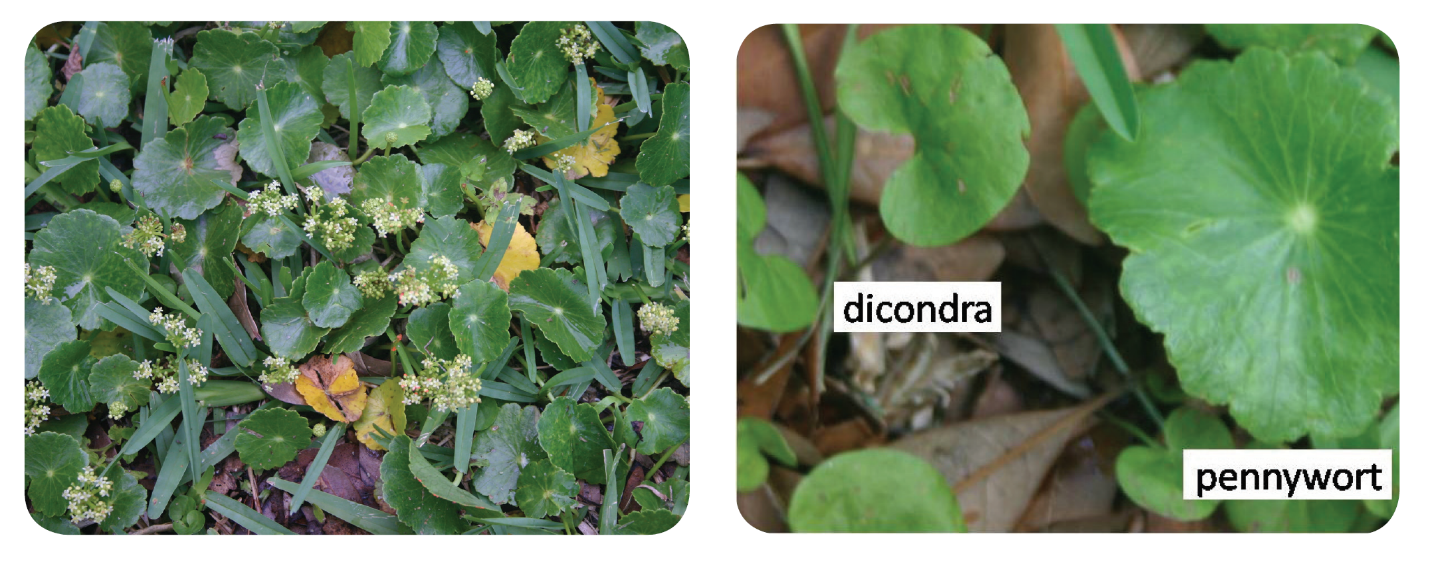
by Ray Bodrey | Feb 5, 2018
We have many weeds in the Panhandle that are a nuisance to our landscape, with some being very difficult to control. Dollarweed certainly falls into this category. But, does dollarweed have an upside?
Dollarweed (Hydrocotyle spp.) is a largeleaf creeping perennial that thrives in central and northern Florida, but is found throughout both Atlantic and Gulf coasts. Dollarweed is resilient, as it can reproduce by seed, rhizomes and tubers. The mature plant produces vertical shoots with shiny green round shaped leaves and scalloped edges. The leaves can grow up to the size of a silver dollar, hence the plant’s name. This plant grows low to the ground and thrives in moist environments.
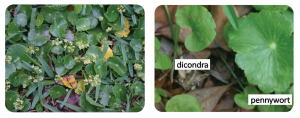
Figure 1: Pennywort (Dollarweed) vs. Dicondra.
Credit: Ramon G. Leon, Darcy E. P. Telenko & J. Bryan Unruh, UF/IFAS
Hydrocotyle umbellate is the species most found in Florida lawns. In city landcsapes, dollarweed can be an indicator of leaking water mains or even septic drainfield problems. It also can be an indicator that you may be over-irrigating your lawn. Hydrocotyle bonarienies or pennywort, on the other hand, is a species that is found on frontal and back dune areas, along with sandy marsh or flatlands. This species is known to help stabilize dunes and assist in combatting dune erosion.
Often, dollarweed is confused with pony’s foot or Dicondra carolinensis. This weed will grow along with dollarweed, as it prefers moist environments as well. Pony’s foot has a distinct difference in leaf structure than dollarweed. Pony’s foot has a kidney-shaped circular leaf, as dollarweed is disc shaped.
How does one control dollarweed in a landscape? Pulling it up by hand can be successful. However, it’s a must to pull all of the white rhizomes from the soil. Otherwise, the plant will rebound quickly. Selective & non-selective herbicides will control dollarweed. However, you must be persistent. Applying a pre-emergent and post emergent herbicide is the best practice when using chemical applications. There are many herbicides on the market that specifically list the control of dollarweed, such as atrazine and 2, 4-D options. Always follow the directions and precautions from the manufacturer when using a herbicide and be sure that the product will not affect your variety of turfgrass. Contact your local county extension office for more information on controlling dollarweed and other pesky weeds.
Supporting information for this article can be found in the following the UF/IFAS publication:
“Pennywort (Dollarweed) Biology and Management in Turf” by Ramon G. Leon, Darcy E. P. Telenko and J. Bryan Unruh: http://edis.ifas.ufl.edu/pdffiles/EP/EP38900.pdf
& “Native Plants for Coastal Dune Restoration- What, When and How for Florida” by M.J. Williams, USDA NRCS: https://www.nrcs.usda.gov/Internet/FSE_PLANTMATERIALS/publications/flpmspu7474.pdf
UF/IFAS Extension is an Equal Opportunity Institution.
by Ray Bodrey | Jan 4, 2018
Can’t ever figure out that perfect gift to give at the holidays? During the next gift giving season, why not try something a little different. Give a patio citrus tree! It’s a unique gift to give or receive here in the Sunshine State.
One of the pleasures nearly all homeowners in Florida can enjoy is the ability to pick fruits from their own trees. It is also an attractive addition to your holiday décor. However, landscapes and hardiness zones will dictate varieties that can be grown around your home. Patio or “potted” citrus that do not grow as large as other species will allow flexibility. Calamondin, key lime, kumquat, lemon, limequat and Tahiti lime are just some of the patio citrus favorites. These types of citrus are also sometimes marketed as dwarf, miniature or snowbird citrus. Although remember, growing any fruit tree in a container can help limit the size of the tree.
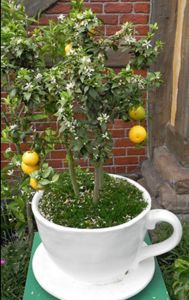
Figure 1: Patio Citrus.
Credit: UF/IFAS Communications.
There are special considerations to take into account with such fruit trees. All citrus need chilling hours each year to reset and to become viable fruit producers the following year. But, long hours of temperatures at or below freezing can cause irreversible damage. Some types of citrus have a higher tolerance to the cold, but lemons and limes tend to be less hardy than other species.
Having space in your home to move patio citrus is key. A spot with access to natural light will support growth during times when Panhandle temps drop significantly. Citrus require sun to grow and be healthy. Partial sun will slow the growth, if needed. A good rule of thumb is to treat patio citrus like a houseplant.
Most likely, from the time you purchase patio citrus, you’ll keep the tree in the pot for the first year or so. Be sure you re-pot as the tree grows. The tree will need to have adequate space in the pot for root development. A good quality potting soil is suitable for growing citrus. Also, be sure to consider weight, especially if you plan to move the pot indoors often.
In general terms, most container-grown plants do not thrive with of too little or too much watering. Rather, water only as needed. After wetting the soil, allow the top inch to become dry before watering again and make sure the container has drain holes. When fertilizing, do so in small amounts every few months. If the leaves are deeper green, then the tree is getting ample fertilizer. As time goes on, you’ll want to prune the tree to keep an appealing shape. Although pest problems are not usually an issue, a homeowner grade insecticide, neem oil or insecticidal soap are all good choices to use should problems arise.
As for fruitfulness, most citrus trees produce fruit, given time and proper care. So, please be patient. One major advantage to patio citrus, it’s easy to reach the fruit at harvest time!
For more information on patio citrus, please contact your local county extension office.
Supporting information for this article is provided by Dr. Pete Andersen of the UF/IFAS Research & Education Center in Quincy, FL, and information can also be found in the following the UF/IFAS publications: “Citrus Culture in the Home Landscape”, by Robert E. Rouse and Mongi Zekri: http://edis.ifas.ufl.edu/pdffiles/HS/HS13200.pdf & “Growing Fruit Crops in Containers”, by Larry K. Jackson and Jeffrey G. Williamson: http://edis.ifas.ufl.edu/pdffiles/MG/MG24300.pdf
UF/IFAS Extension is an Equal Opportunity Institution.









